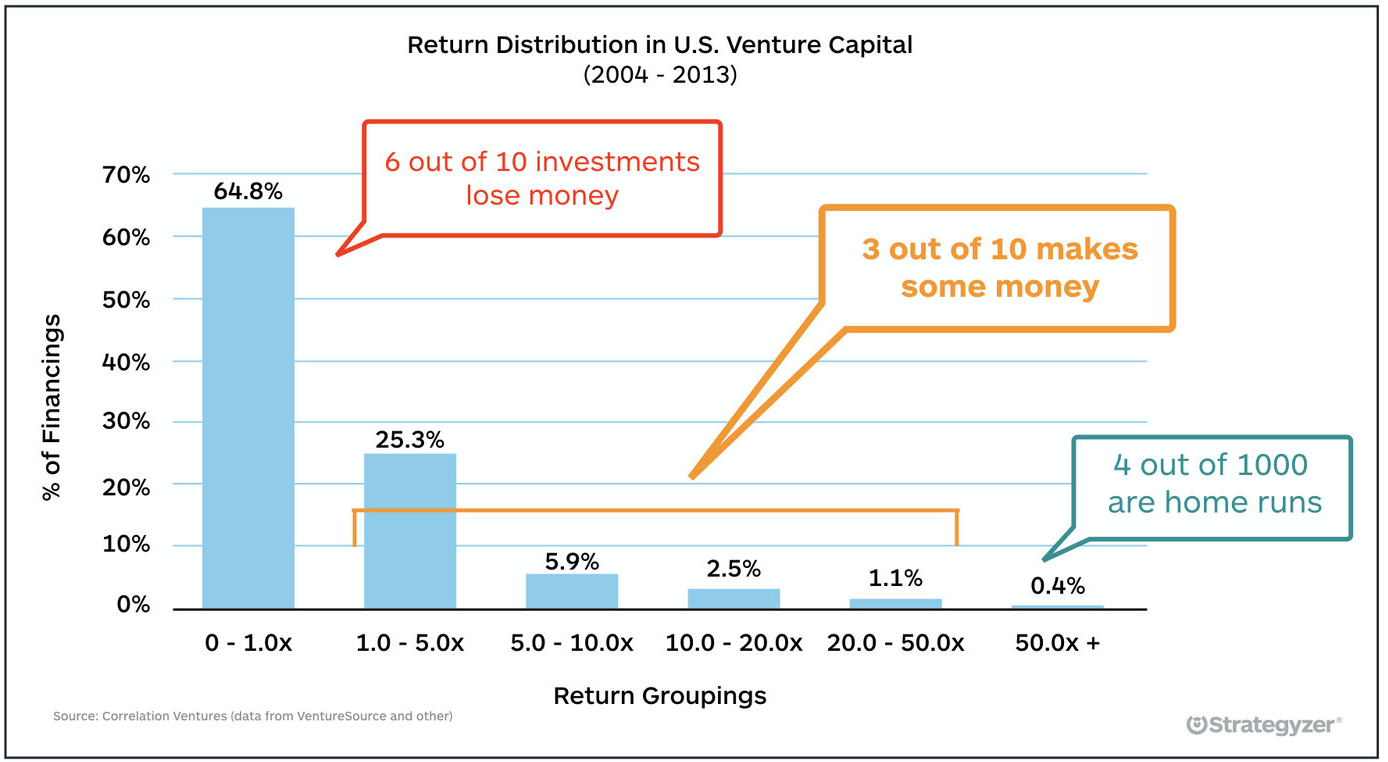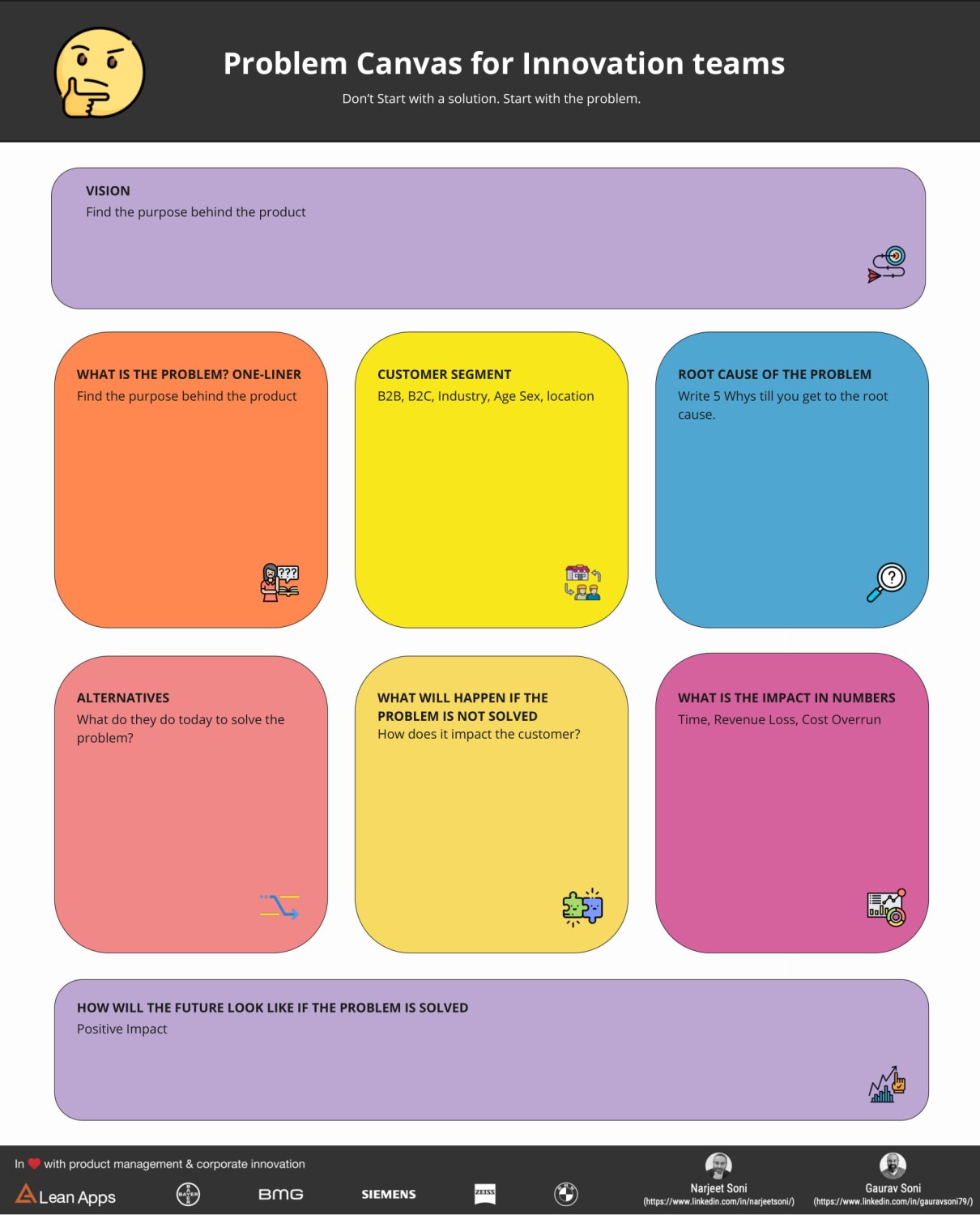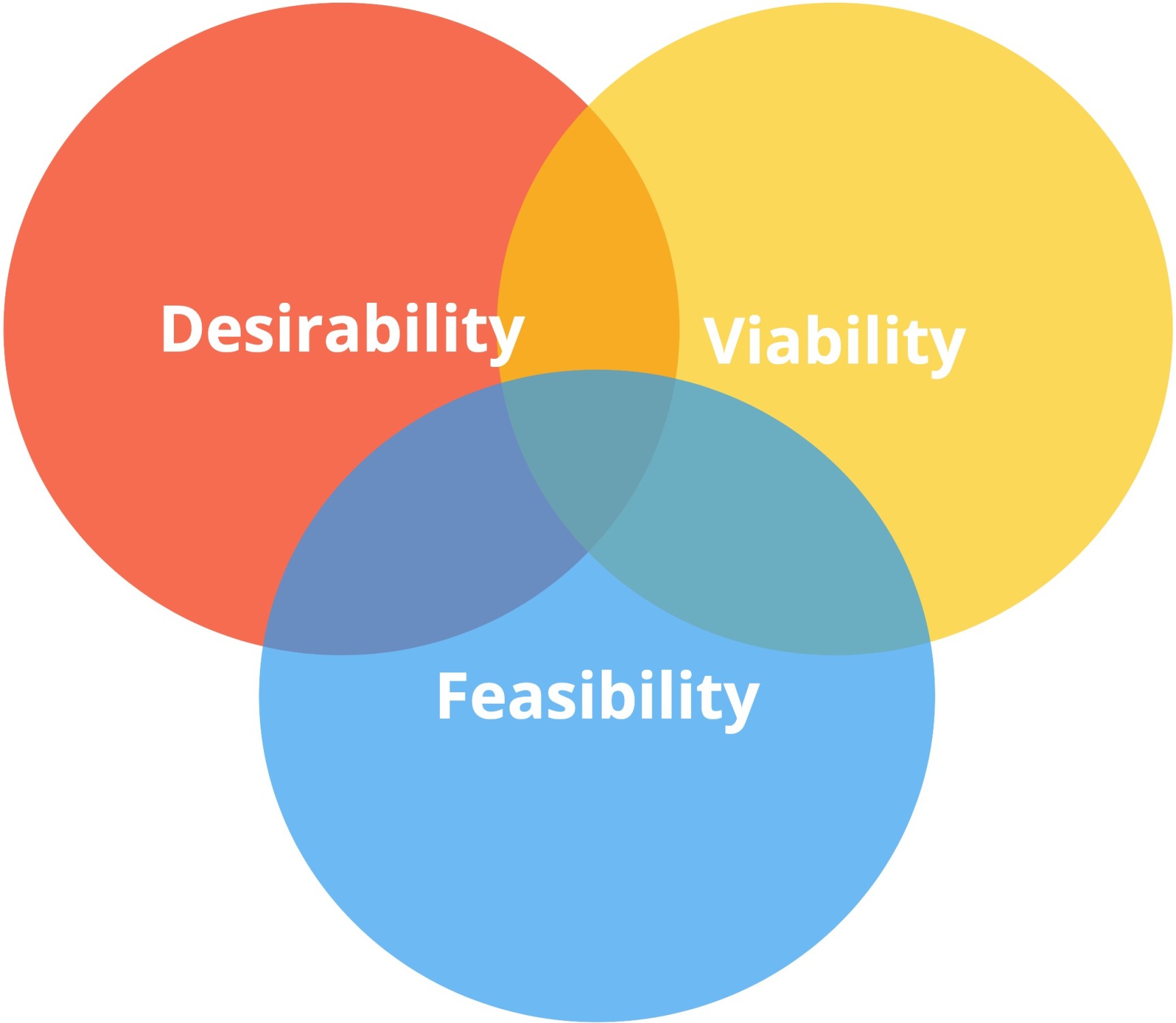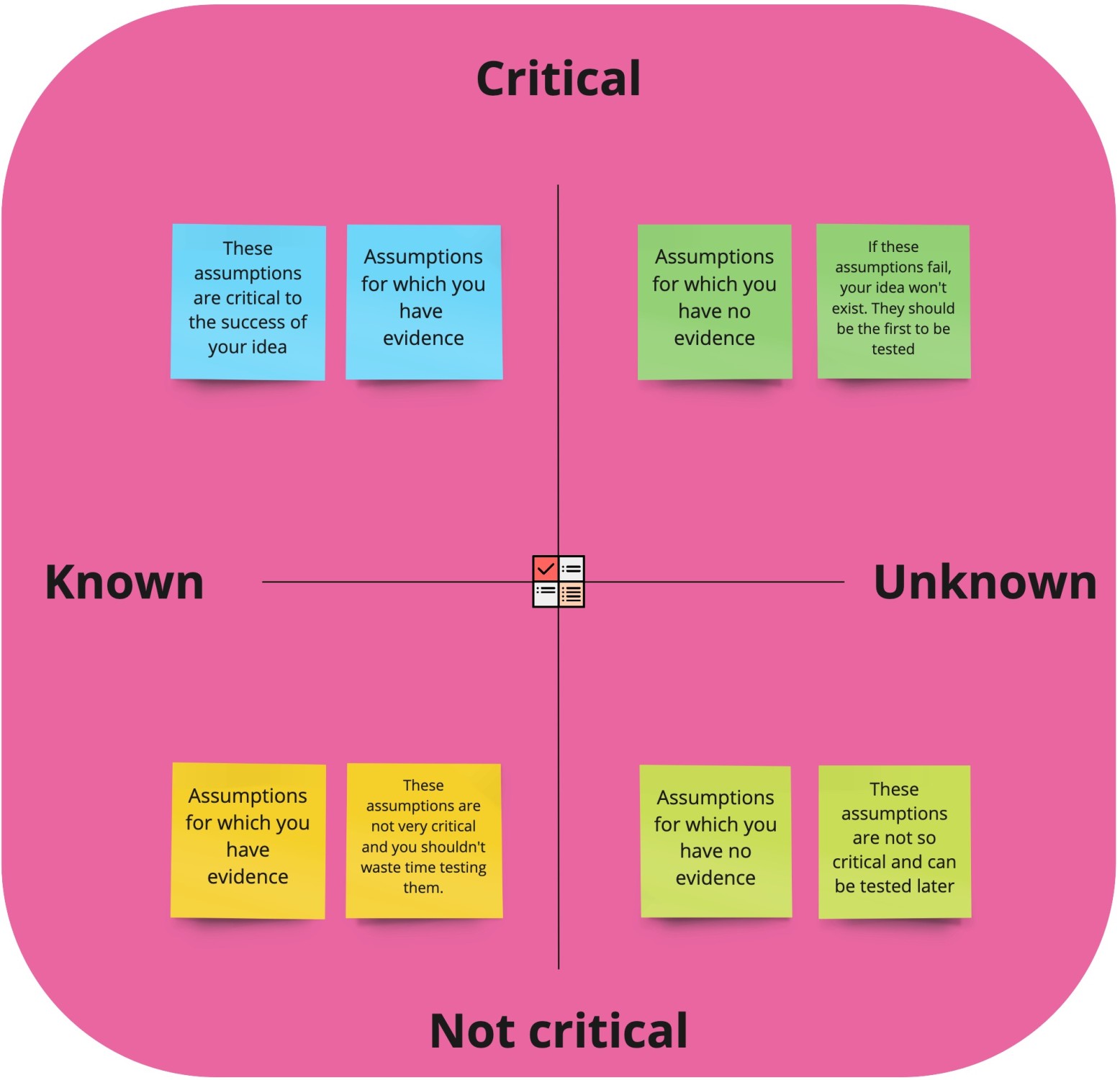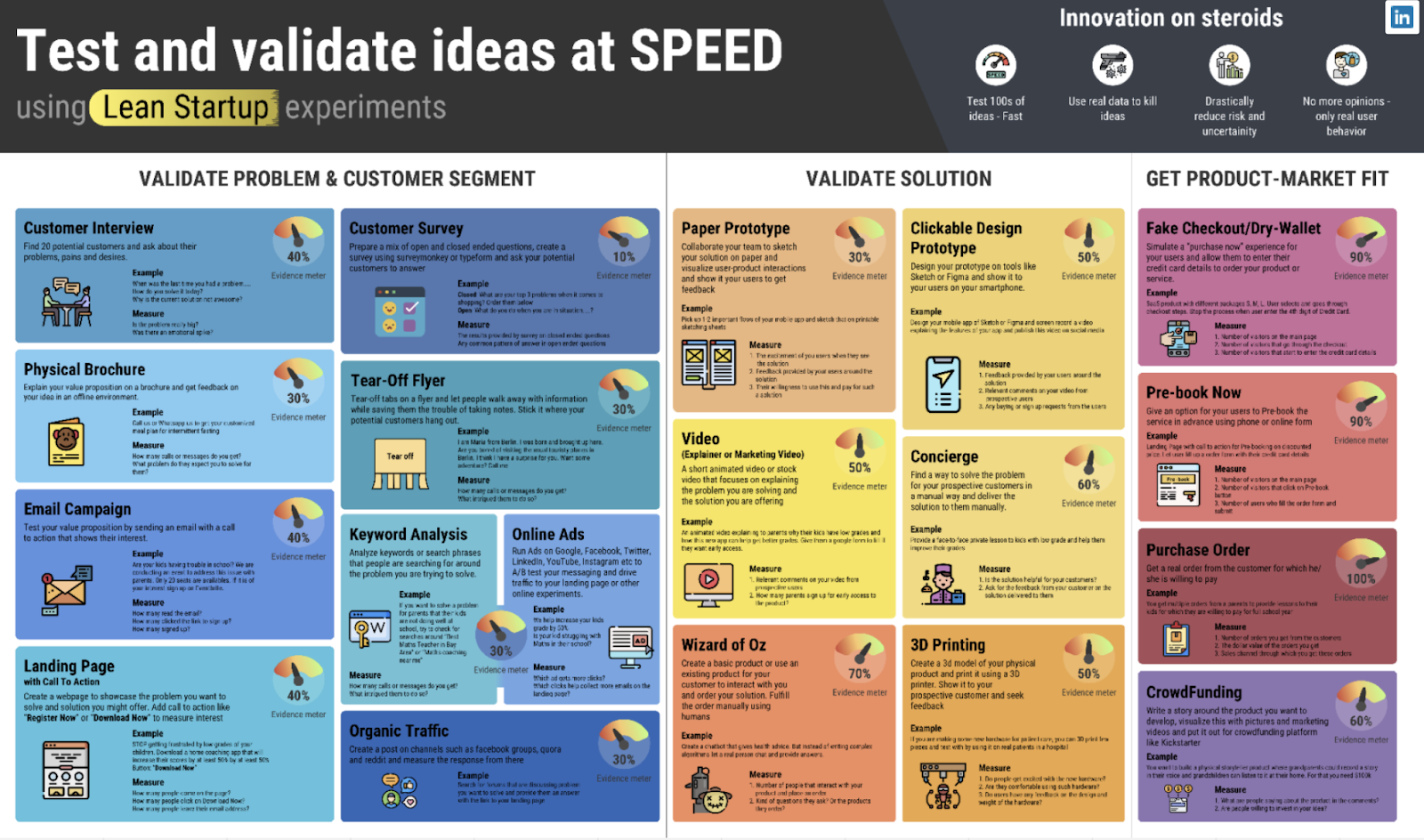Assumptions kill products and burn your money
08 January 2021
TL;DR: “How can you prevent your idea from failing? How can you identify all your assumptions? Prioritize and test them? Is there a system to de-risk your potential product?“
Most new products will fail in the market, even if they are competently executed.
Says who? Alberto Savoia, the innovator behind The Law of Market Failure.
Even VC data tells us that it takes more than 250 ideas to create a multi-billion $ return.
Following the law of market failure, we should presume a potential new product to be a failure UNTIL we’ve collected enough evidence to make us believe otherwise. Let data silence all opinions (including the ones from HiPPO). Let numbers speak. Let there be evidence.
In our experience of developing and launching new products, we have hit upon several failures. And it’s easy to blame them on Execution.
Every unsuccessful idea once looked great on a spreadsheet and PPT.
What goes wrong then?
It usually starts with living permanently in a solution space (a.k.a. Dreamland). You would have heard that pitch from a friend:
“What if there is an app that can…………”
“Imagine you are entering your car and ……………”
We usually fail to mention – what PROBLEM are we trying to solve and WHO has the problem. We simply assume that
“if we build it, someone will use it, buy it and we will be rich”
And even if the idea is defined around the problem and a customer segment, it’s still filled with BIG unknowns. Most products are built with assumptions. Some so critical, that, if not true, will totally FAIL the product in the market.
So if you want to increase the certainty of your success, or want to de-risk your investment, you need to identify all the unknowns (assumptions), prioritize them and validate them by generating your own data (remember NO amount of market research will shield you from this failure).
Here’s what you could possibly do:
Step #1: Define your IDEA in 1-sentence
Let’s say you come up with an idea of creating special masks for people who wear glasses during this pandemic. You talk to your team, some of them wear glasses themselves. They empathize with the problem of how breathing through masks fogs up their glasses, leading to a blurry vision and awkwardness around strangers.
Your first instinct might be, This is it! Best idea ever! Let’s build it.
But hang on, think about The Law of Market Failure. And let’s assume that these masks will be a failure UNTIL you have evidence to prove otherwise.
So far you just need two post-its:
Post it 1: Idea: Masks for glass-wearers. We are calling them Clear Masks
Post it 2: Problem: Glasses get fogged while wearing normal masks
Step #2: Create a “We believe” Hypothesis
After you’ve zeroed in on the idea and the problem that you are trying to solve, you need to create a hypothesis.
A good hypothesis is one that is testable and precise. It is the assumption on which your whole idea/product is built on. In other words, what is it that you need to learn for your idea/product to work?
You can begin by writing the phrase:
We believe that…target market A…has a problem B….and will do C (action)
In Clear Mask case, the “We believe” Hypothesis would be:
We believe that people who wear masks with glasses suffer from foggy glasses and therefore would like to buy Clear Masks to have a clear vision.
Step #3: Create an XYZ Hypothesis
“We believe” hypothesis can be hard to test with concrete evidence. How can you possibly test that all people wearing glasses with masks suffer from a foggy vision around the world? You can’t. That’s why you need to be more specific and you have to say it in numbers.
A testable hypothesis is what you need. It must contain:
X: A specific percentage of your target market.
Example: At least 20%
Y: A clear description of your target market.
Example: People wearing glasses with masks in the age group 30-45 in the US
Z: How you expect the market to engage with your idea.
Example: Will pay $25 for a Clear Mask
Your XYZ Hypothesis would be:
At least 20% of people wearing glasses with masks between the age of 30-45 in the US, will pay $25 dollars for a Clear Mask.
Step #4: Break your XYZ Hypothesis into PROBLEM and CUSTOMER Segment
At this point, you need to break your XYZ Hypothesis into Problem and Customer Segment.
You can simply do that by mapping your insights on the Problem and Customer Segment Canvas given here. (Download it)
Remember this is a very high level exercise. So don’t worry if you don’t have all the information.
Step #5: Flesh out your ASSUMPTIONS
Now you need to flesh out the underlying assumptions in your defined XYZ Hypothesis, Problem Canvas and Customer Canvas through 3 key filters:
DESIRABILITY – Do they want this? The focus here is on the problem and customer. Start by answering these questions:
- Who are the target customers of our solution?
- What problem do they want to solve?
- How big is the problem for them? Are they frustrated or are they ok to live with it?
- How do they solve it today? Or are they actively looking for a solution?
- Why is the current solution, if any, not awesome?
For Clear Masks – this is how we would answer them:
- Target customer: people with glasses in the age group 30-45
- Problem: People wearing masks with glasses are suffering with foggy vision and discomfort
- Problem size: It is a discomfort for almost 8 hours a day
- Any alternative solution: Don’t use glasses with masks; keep cleaning it throughout the day; buy expensive non-foggy glasses
- Big dis-satisfaction: It’s a constant discomfort to clean glasses throughout the day. To solve this problem there is no cheaper alternative.
Put these down on RED stickies (or your favorite color that represents danger)
VIABILITY: Should we do this? The focus here is on having a viable business model. Is it a solution that will make money?
Try and answer these questions:
- How big is the target market?
- Who is our main competition?
- How will our solution generate revenue?
- How would we acquire our customers?
- How would we ensure they will actively use our solution?
For Clear Masks – this is how we would answer them:
- Market Size: 164 million people in America wear glasses
- Competition: Anti-Fog spray for $18; limited use
- Revenue Stream: We will sell clear masks for $25
- User acquisition channels: Partner with optical providers, sell on amazon, sell on website (via ads on Facebook and Instagram)
- It will last for 6 months after that they will have to buy a new one; we will create them in fancy designs
Put these down on YELLOW stickies
FEASIBILITY: Can we do this? Here the focus is on engineering, development, legal and compliance challenges?
Try and answer these questions:
- What is the biggest technical or engineering challenge?
- Are there any legal, compliance or regulatory hurdles?
- Do we have enough funding to do it?
- Do we have access to the right skills required to make it happen?
- Is there any internal bureaucracy/hurdle that we need to address?
For Clear Masks – this is how we would answer them:
- Technical Challenge: Could we 3D print a nose bridge that is comfortable and looks cool?
- Legal challenge: There is NO legal challenge. We might have to check whether this kind of product falls under the category of medical products? We also have to check if we can patent it?
- Funding: We have $250.000; we should check if it’s enough
- Skills: We have a product designer, but we have to check how we will produce it and where?
- Internal Hurdle: Our leadership might kill this because this does not fit into our core business model
Put these down on BLUE stickies
Step #6 – Find your CRITICAL UNKNOWNS
After you’ve got a bunch of red, yellow and blue stickies stating your desirability, viability and feasibility assumptions respectively on the white board, you’ve got to map them on an x-y axis.
On the x axis, you have known and unknown i.e. depending on how much evidence you have or don’t have in order to support an assumption, you place it on the x-axis.
You place an assumption on the left, if you are able to produce relevant, observable and recent evidence to support an assumption. And remember, your evidence should not come from research data.
For instance, the Feasibility assumption that you can secure and manage all technologies and resources that are required to build Clear Masks, including patenting and human, financial and other resources will be on the left because you are already in the business of producing medical masks. You have plenty of relevant, observable and recent evidence to support your assumption.
You place an assumption on the right side, if you do not have evidence to support an assumption, and thus would need to generate it.
For instance, the Viability assumption that you can get customers to pay $25 for a Clear Mask will be on the right because you have no evidence to support it.
On the y axis, you have critical and uncritical i.e. depending on how critical an assumption is for your idea to succeed, you place it on the y-axis.
You place an assumption on the top, if it is absolutely critical for your idea to succeed. If that assumption is proven wrong, your idea will fail and all other assumptions will become irrelevant.
For instance, the Desirability assumption that people wearing masks with glasses are suffering with foggy vision and discomfort will be on the top. This problem needs to be a BIG pain point for your customer because it is absolutely critical for your idea to succeed. If this assumption fails, all your other assumptions become irrelevant.
You place an assumption at the bottom, if it is not one of the first things you’d go out and test.
For instance, the Feasibility assumption that you have the right channels to market Clear Masks will be at the bottom. This assumption can be tested later.
Once you’ve mapped out your assumptions in the four quadrants, stay away from the bottom left quadrant. No point wasting energy on running a lot of experiments on assumptions that you already have evidence for and are rather uncritical.
You’ve got your riskiest assumptions in the top right quadrant. They are critical yet unknown. This is where you want to put your time, energy and focus.
Next you will have to Design experiments and drive out the uncertainty in your idea.
